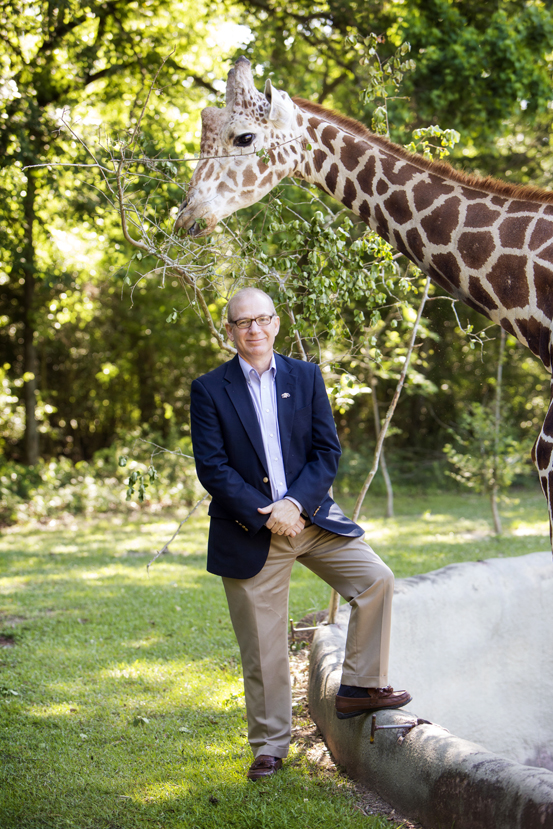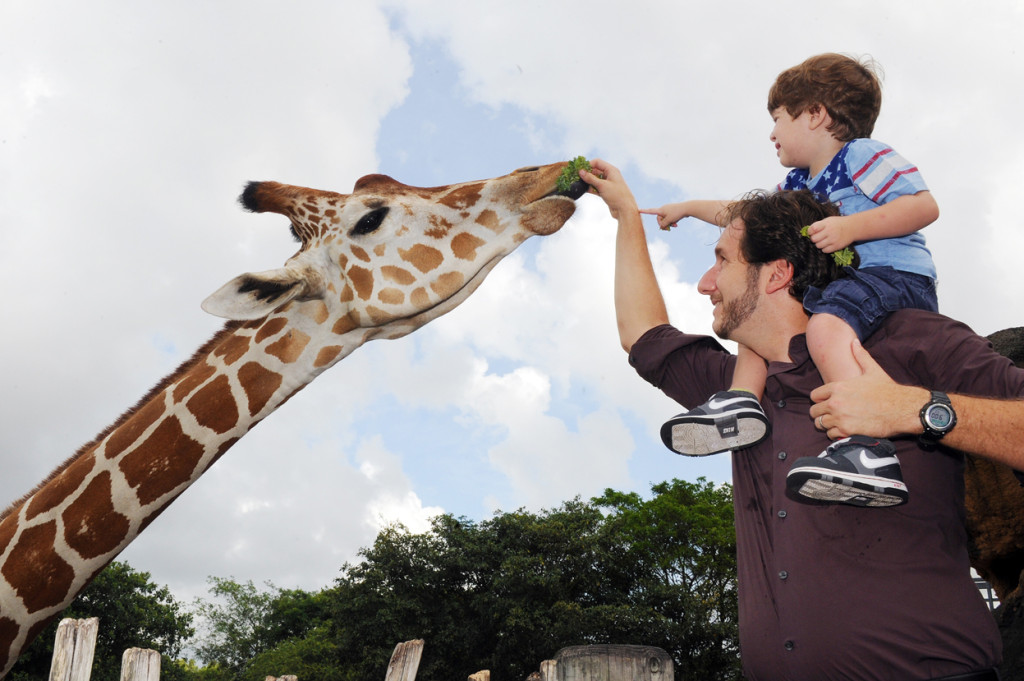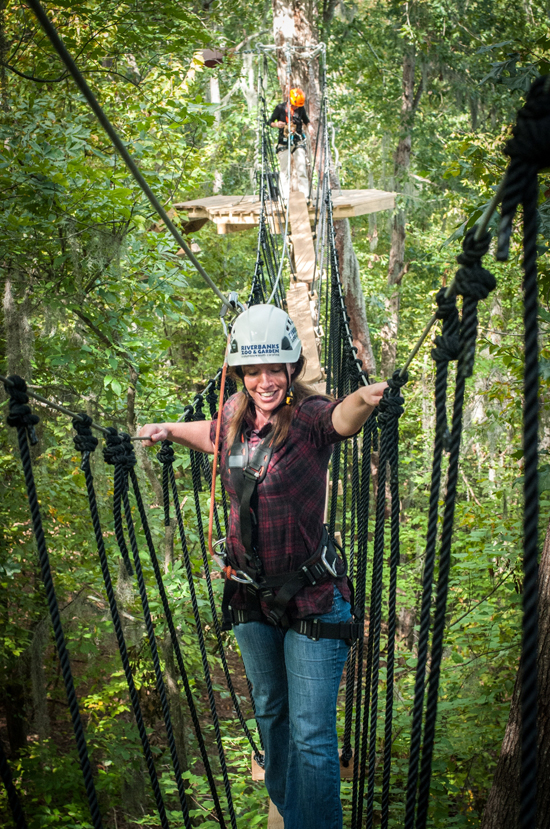
A new view of Baton Rouge Zoo
Photo of Phil Frost, BREC’s Baton Rouge Zoo director, by Collin Richie
BREC’s zoo is going through its first growing pains as officials plot a strategy for its future
Phil Frost rattles off a list of century-old zoos in the South. Dallas Zoo, 1888; Zoo Atlanta, 1889; Memphis Zoo, 1906; Houston Zoo, 1920; Audubon Zoo in New Orleans, 1914.
He explains that each of these longstanding zoos has gone through plenty of changes and renovations since opening. BREC’s Baton Rouge Zoo, he says, is ready for its first big change.
“We’re 45 years old,” Frost, the zoo’s director, says. “What we’re going through is really our first big growing pain that many other zoos around us have gone through two or three times.”
|
|
With those growing pains comes a push to redefine what the zoo means to Baton Rouge. While BREC just wrapped up its 10-year strategic plan, Imagine Your Parks II, the zoo—which falls under its purview—hired Philadelphia planning firm Schultz & Williams to conduct a separate, but complementary feasibility study. It’s the first time the zoo has directed its own study of this scope.
Frost and BREC Superintendent Carolyn McKnight say the facility, which sees 250,000 visitors a year (the highest of any BREC site), is in need of a dramatic revamp and a big buy-in from the community if it’s to bring in repeat visitors and stand out among other zoos in the region.
They are aiming to up the attendance to 375,000 annually, with an early estimate of $110 million in investments to reimagine the zoo.
“It is time to move the zoo in a new direction,” McKnight says.
Growing pains
Struggling to meet tougher animal welfare standards has become a major challenge for many zoos, including the Baton Rouge Zoo, which had to close its aging elephant exhibit a few years ago. Keeping the exhibit as it was would also jeopardize the zoo’s reaccreditation, so the last remaining elephant was sent in 2013 to the National Zoo, which renovated its own elephant habitat to the tune of $50 million.

Another problem: The site’s small education center can only hold about 35 kids at a time, when nearly 1,500 often enter the zoo on field trip days. “A [sizable] learning center would let us do more than just one classroom program at a time,” Frost says.
Without a proper indoor space, the zoo misses out on traveling exhibits from other zoos that focus on insect and amphibian specimens, dinosaurs and even nature photography. Lack of space also prevents the zoo from developing its own indoor exhibits that can show here and tour the country.
But perhaps the biggest challenge facing the zoo right now is upping the cool factor the way others have—essentially revamping zoos as theme parks that blend education and conservation components with thrilling activities and unique recreational features. Think ziplines, splash pads and lazy rivers for the kids and teenagers while the adults can grab a bite at an eco-restaurant with views of the animals or check out expanded shopping areas.
“Zoos around the nation are doing things that are so incredible for their community,” McKnight says. “We need a place that people would want to come back to.”
She cites the first Brew at the Zoo event last year as an example of the zoo’s ability to attract a diverse crowd. The sold-out adults-only event featured craft beers, food and music while around 2,000 guests toured the zoo at night. Bolstered by that success, organizers are gearing up for the second go-round scheduled for this Oct. 2.
The goal with these new attractions and activities is offering options for all age groups and adding a wow factor for kids and teenagers who have become harder to please.
“Years ago, when people started using the ‘E’ word—entertainment—about zoos, it was seen as a bad thing because education was always more important,” Frost says. “But you can do the two together, and when you do, it’s usually a lot more memorable, and people take a lot more away from it.”
Change the look or location?
McKnight has talked before about the possibility of moving the zoo’s entrance from Thomas Road to the more-traveled Highway 19, where the newly revamped Greenwood Community Park’s entrance is located.
It would certainly help visibility. But what about moving the zoo entirely? For McKnight and Frost, that option isn’t off the table.
“Some of the questions [we got from] community leaders were: If you are going to invest that much money [in renovating the zoo], are you sure that’s where you need to invest it?” Frost says. “Is that the best business model for the zoo to be where it currently is? That’s something we have to figure out—if we spend this much money right here, how many more people do we think we will bring in? What if those great amenities are somewhere else—do we feel that our numbers would go up?”
These are more long-term considerations for the zoo, they say. But Frost cites statistics that show a disparity in visitors from around the region.
The zoo’s 70807 ZIP code represents less than 1% of its visitors, he says. The three nearest ZIP codes represent only about 3% each. The highest number of visitors come from Denham Springs, Zachary, Walker and ZIP codes between LSU and the Country Club of Louisiana south of Interstate 12.
“You look at hotels, and it’s all about location, location, location,” Frost says. Location can also be key for zoos. As a destination park, the struggle is providing a service for residents in close proximity while acknowledging that the space serves as an attraction for the parish and surrounding areas.
If the zoo were to move, McKnight says, the property would be converted to a use that nearby residents want.
“If it’s going to be a situation where we have to rethink where it’s located, that’s something we need to have a conversation about,” McKnight says. “And I’m willing to have a conversation.”
The future of the zoo
The zoo’s vision document ahead of the feasibility study says the new zoo will “provide far more than an opportunity to view animals. … [it will] offer fun, creative, immersive experiences that have the power to deliver a compelling message about preserving wildlife.”

Frost says even with these new experiences, the zoo won’t lose sight of its wildlife-centric mission. Its Realm of the Tiger area, he says, is still one of the best in the region.
Officials want to bring back elephants via a larger habitat along with an expansive mixed-species exhibit that mimics the African Savanna, with rhinos, zebras and a platform for getting eye-to-eye with giraffes. The zoo also plans a “South American Cloud Forest Adventure,” with a walk-through aviary of free-flying birds and habitats for jaguars, bears and primates.
The early projection of a $110 million zoo overhaul, including $25 million in private support, might give residents pause, but Frost and McKnight agree it’s essential.
The zoo has an annual operating budget of about $4 million, with around 43% of that coming from earned income.
“We’re going to have to do some of these things in a very big way,” Frost says. “We can’t continue the way we’ve done in the past, with just a little piece here, a little piece there.”
McKnight agrees, saying this won’t be just a BREC project.
“It’s going to take the business community, the philanthropic community, BREC and a whole bunch of other people involved to make this zoo what it should be,” she says.
The findings Schultz & Williams is scheduled to present the zoo at the end of May (225 went to press before findings were released) will help officials determine what the next steps will look like, Frost says.
“I’ve been here 17 years, and this is really the first time we’ve gone out and really engaged people this directly and said, ‘What do you think? What would you like to see, and are you willing to support it?’” he says. brzoo.org

BREC reimagined
While the Baton Rouge Zoo makes its first steps toward a total revamp, the entire BREC system has begun putting into action the results from its latest 10-year plan, Imagine Your Parks II, released early this year.
The first Imagine Your Parks, conducted in 2004, saw the creation of several new community parks, including Perkins Road Community Park. That one seems to be a shining example of where BREC is headed, with diverse amenities that cater to a younger audience. The climbing wall has become so successful that BREC recently added a full-time rock wall manager and a membership plan.
The first Imagine Your Parks is 90% complete, Superintendent McKnight says, but BREC is pushing forward with objectives from the next 10-year plan and seeking out partnerships with public and private groups to improve facilities. That includes:
• Water features at community parks
• A café at Independence Park
• Added water features at Liberty Lagoon
• Facilities for lacrosse and cricket, a public running track and “all different types of sports we haven’t been asked to do before,” McKnight says.
• A comprehensive trails project, with BREC planning to unveil a master plan in the next few months illustrating 150-plus miles of trails between and within parks.
“People around the country are asking their parks systems and city leaders to step up and make their community a more livable, walkable, bike-riding friendly community—and that’s what we’re doing here,” McKnight says. brec.org
|
|
|



